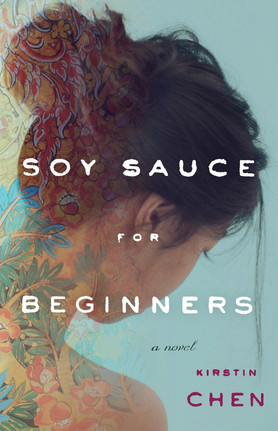Literary Singapore
- Staunton Books & Tea
- Sep 7
- 4 min read
Clifford Garstang is the special guest at our October International Book Club, giving us a perspective on Counterfeit by Kirstin Chen. All books mentioned in this post are collected in the Community Curated Shelf at Staunton Books & Tea.

In 1983, the Chairman of the law firm where I worked as a junior associate (a large firm headquartered in Chicago), asked me if I would like to move to Singapore to work in the firm’s small branch office there. He didn’t have to twist my arm. I had visited Singapore five years earlier as a backpacking tourist following a two-year stint as a Peace Corps Volunteer in South Korea. It was that experience in Asia that prompted me to go to law school with the aim of building an international career.
So, Singapore became my home for nearly a decade (minus a brief hiatus in California). During that time, although I aspired to be a writer, I was busy with work and travel, and I didn’t pay attention to the local literary scene, which I now regret.
Since then, I’ve become more familiar with Asian fiction, especially because my own writing often borrows from my experiences in North and Southeast Asia. In fact, my most recent novel, The Last Bird of Paradise, is set primarily in Singapore, a country that most Americans know very little about. In the book, I give readers a glimpse into the country’s history as a British colony, with a particular emphasis on a historical incident that took place during World War I, but I also portray 21st-century Singapore, its political and cultural environment, as well as the anti-terrorism struggles it shares with other parts of the world.
The Last Bird of Paradise by Clifford Garstang is about two women, nearly a century apart, who find themselves in Singapore against their wishes. One, a young English painter, has been sent to Singapore in 1914 because of the danger the war on the continent poses. Sadly, the war also impacts Singapore in ways her family could not predict. The other woman, an American lawyer in New York, moves to Singapore with her husband because of his disillusionment with the city after the 9/11 terrorist attacks. They discover that Singapore is not immune from terrorism, and that life on the island has its own challenges. What connects the two women are the Englishwoman’s paintings that speak to the American woman in mysterious ways.
To focus our discussion of Singaporean literature, I wanted to look at the work of Kirstin Chen, a Singaporean writer I met years ago at the Sewanee Writers’ Conference.
Chen’s most recent book, Counterfeit, isn’t set in Singapore but Chen told me she feels her Singaporean perspective gave her particular insight and objectivity into her Asian American and Mainland Chinese characters. Exploring questions of identity, morality, and female empowerment, the novel is about Ava Wong, a Chinese American lawyer who gets involved with a scheme to import knock-off luxury goods from China.
Unlike Counterfeit, Chen’s first novel, Soy Sauce for Beginners, is about a woman who moves from San Francisco back to her native Singapore to help with her family’s artisanal soy sauce business. In the process, she becomes embroiled in various problems, including her mother’s alcoholism and her father’s machinations.
I asked Kirstin about other recent Singapore novels she could recommend, and she named three:
The Original Daughter by Jemimah Wei is about two girls in a working-class family in Singapore who are determined to achieve success at the cost of their friendships and social life. Shocking family revelations turn their world upside down and cause them to question the place of their family in the rapidly modernizing country.
Sister Snake by Amanda Lee Koe is another story about sisters, this one spanning a thousand years and based loosely on a traditional Chinese folktale. In this case, the sisters return to Singapore from New York after a violent encounter there, but discover that they share a secret: they once were snakes in Tang Dynasty China.
The Storm We Made by Vanessa Chan is a historical novel set in Malaya, including Singapore (which were both British colonies until they became independent after World War II). The story involves a woman who dreams of her country’s independence and unwittingly aids the Japanese invasion of Malaya and Singapore.
If Americans know anything about Singapore, it might be from three other novels or the movies based on them.
Crazy Rich Asians by Kevin Kwan (now a series of books), is hilarious. In it, fabulously rich Singaporeans live luxurious lives, spurn the lower classes, and travel the world. It isn’t a realistic portrayal of Singapore, but I found the first book in the series to be an enjoyable read.
Saint Jack by Paul Theroux is a much grittier book that was part of the reason for him getting denied entry to Singapore for several years. The main character, Jack, is a profligate expatriate in Singapore known for getting into trouble. Among other hustles, he runs a brothel catering to American soldiers on R&R from Vietnam. The Singapore Theroux portrays did not win him fans among the rulers of the country.
King Rat by James Clavell is a moving story based on Clavell’s own experience in a Japanese POW camp at Changi Prison in Singapore. The novel describes the horrific conditions of the prison and highlights the suffering and survival instincts of the prisoners.
I also wanted to mention one Malaysian writer, Tan Twan Eng, whose novel The Garden of Evening Mists, was shortlisted for the Man Booker Prize. The book is about a Malaysian man who was a prisoner of the Japanese during World War II and later became a judge overseeing war crimes cases.



















